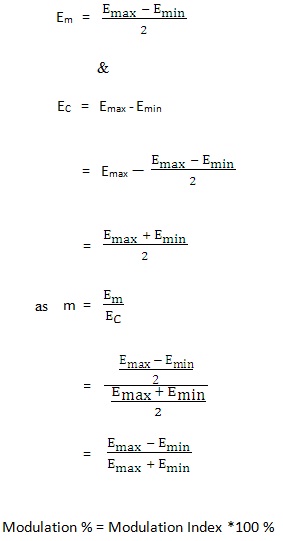In amplitude modulation, the amplitude of the carrier is varied according to variations in the amplitude of the modulating signal. The frequency of the carrier remains same while its amplitude varies according to amplitude variation of the modulating signal.
Let us represent the modulating signal by em
 |
 |
 |
 |
 |
 |







